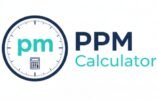Environmental monitoring is the backbone of public health and ecosystem protection. Among the most reliable tools in this field is the measurement of “parts per million” (PPM). By accurately tracking chemical concentrations in water, air, and soil, PPM empowers communities, industries, and regulators to make informed decisions about safety and compliance.
What is PPM and Why Does It Matter?
PPM, or parts per million, is a unit that expresses the concentration of a substance within a million parts of another. In environmental science, PPM is the language of trace detection—whether you’re measuring a drop of chlorine in a swimming pool or the faintest whiff of carbon monoxide in city air.
- Water quality: PPM quantifies contaminants like nitrates, chlorine, or heavy metals.
- Air quality: PPM is used to measure gases such as carbon monoxide (CO), ozone (O₃), and volatile organic compounds (VOCs).
- Soil health: PPM tracks nutrients and potential toxins in agricultural or industrial soils.
If you’re new to the concept, What is PPM? offers a clear introduction.
Practical Applications of PPM in Environmental Monitoring
Water Quality Monitoring
Water authorities and environmental agencies rely on PPM-based analysis to ensure safe drinking water and healthy aquatic ecosystems. Common uses include:
- Testing for safe PPM levels: Safe PPM Levels Drinking Water outlines regulatory standards for common contaminants.
- Measuring dissolved substances: Tools like the Hydrogen Peroxide PPM Calculator help calculate disinfectant concentrations in treatment plants.
Example: Nitrate Monitoring
Suppose a water sample contains 10 mg/L nitrate. For dilute aqueous solutions, 1 mg/L is approximately equal to 1 ppm, so this sample has 10 ppm nitrate—a value you can quickly check using the Convert PPM to Concentration Units tool.
Air Quality Assessment
PPM is essential for tracking air pollution, especially in urban and industrial settings:
- CO and NO₂ levels are measured in PPM to assess compliance with air quality standards.
- Sensor calibration: The PPM to Voltage Calculator helps interpret sensor data for accurate readings.
Example: Carbon Monoxide Levels
The U.S. EPA recommends a maximum of 9 ppm carbon monoxide for 8-hour exposure in indoor air. Exceeding this level signals a need for immediate action.
Soil and Environmental Remediation
In soil science, PPM is used to evaluate both nutrient status and contamination:
- Fertilizer management: The Fertilizer PPM Calculator guides safe and effective fertilization.
- Contaminant tracking: Environmental scientists use PPM to monitor heavy metals or pesticide residues, supporting remediation efforts.
Best Practices for Reliable PPM Measurements
Use Calibrated Instruments
Accurate PPM readings depend on properly calibrated meters and sensors. Regular maintenance and calibration are essential for trustworthy data .
Understand Sample Preparation
Contaminated or mishandled samples can skew results. Always follow standard protocols for collection, storage, and handling to ensure accuracy .
Interpret Results in Context
Compare your findings to regulatory standards or natural background levels. For water, PPM Standards for Drinking Water provides helpful benchmarks.
Apply Correct Conversion Methods
Different substances and media may require specific formulas or units. For conversion support, visit Convert PPM to Concentration Units.
Frequently Asked Questions
How do I convert between PPM and mg/L?
For dilute aqueous solutions, 1 ppm ≈ 1 mg/L. This makes it easy to interpret water test results.
Are PPM measurements the same in water and air?
Not quite. In water, PPM is typically based on mass (mg/L), while in air, it’s based on volume (parts per million by volume, or ppmv). Always check which unit your instrument or report uses.
What are typical safe PPM levels for drinking water contaminants?
Standards vary by substance and region. For detailed tables, see Safe PPM Levels Drinking Water.
Conclusion: PPM as a Cornerstone of Environmental Safety
PPM measurements are critical for safeguarding water, air, and soil quality. By mastering PPM calculations and using reliable tools, environmental professionals and concerned citizens can help ensure a cleaner, safer world. For more calculators and in-depth guides, explore PPMCalculator.
